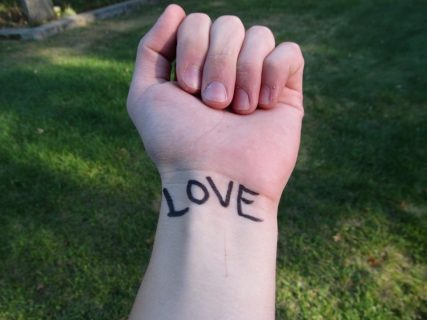
One in twelve young people, mostly girls, engage in self-harm—cutting, burning, or otherwise injuring themselves.
While it may be soothing to the teen, it is also concerning—and it indicates that teens are having a very difficult time dealing appropriately with their emotions.
There are a lot of misconceptions about why teens cut—they’re emo, they’re seeking attention, they’re “crazy” or suicidal. In reality, most teens who hurt themselves do so because they feel numb and blunted, and creating pain through self-harm helps them experience release. Teens who cut don’t know how to regulate their emotions, and deal with distress.
Often, teens who suffer from this kind of emotional dysregulation live in what’s called an invalidating environment, where caregivers don’t respond to their emotions in an appropriate way. Suppose a girl is sad because she got into a fight with her friend. An invalidating caregiver will either tell her to suck it up and move on or simplify how easy it is to fix things by telling the girl to just call her friend, say I’m sorry, and things will be better. This can teach teens that they can’t trust their emotions and can lead to them setting unrealistic expectations for themselves in terms of their ability to deal with distressing situations. As a result, even normal feelings of sadness or distress become difficult to communicate. This can lead to numbness, and teens who harm themselves in order to feel something.
That’s why I often first validate and understand my teens’ points of view related to cutting. I know it won’t be easy to stop. When they feel the urge to self-harm, we talk about possible alternatives in which they can seek sensations that are less harmful but equally intense, such as holding ice cubes or splashing cold water on their face, or listening to a “feel good” or “screw this” playlist. Over time, I also help teens learn mindfulness, distress tolerance, and emotional regulation, so they can handle the stresses of life without feeling overwhelmed. The young people that I work with learn that, yes, when something bad happens, it’s ok to feel sad, just as they learn it’s ok to celebrate when they’re happy.
If you notice that a young person in your life is cutting, you can help. As a parent or caregiver, approach the teen with curiosity, not judgment or blame. Just listen to their feelings and emotions without trying to fix or change them. Help them get professional care (at the Mount Sinai Adolescent Health Center, we provide therapy and mental health care for free to anyone ages 10-24). Finally, be open to being a part of their treatment. Many parents make the mistake of simply dropping off their child and expecting the therapist to do all the work, but your behaviors at home have a big impact.
Witnessing a young person harm themselves is very challenging, but if we understand the roots of the behavior and the best practices for treatment, we can, together, get these teens the help they need.
Dr. Robinson-Brown earned her PhD in Clinical Psychology with a Child and Family subspecialty from Loyola University Chicago. At the Center, she provides individual, group, and family therapy, as well as psychological testing for the adolescent population. In addition, she co-directs the APA Accredited Pre-Doctoral Psychology Internship Program and Externship Program and heads the Dialectical Behavior Therapy (DBT) Program, which addresses emotion dysregulation, self-harm, and poor interpersonal relationships in adolescents and young adults.
The Mount Sinai Adolescent Health Center is located in New York City. It provides comprehensive, confidential, judgment free health care at no charge to over 10,000 young people every year. This column is not intended to provide medical advice, professional diagnosis, opinion, treatment or services to you or to any other individual, only general information for education purposes only. If your child is unusually upset for more than six weeks, please see a mental health professional.


